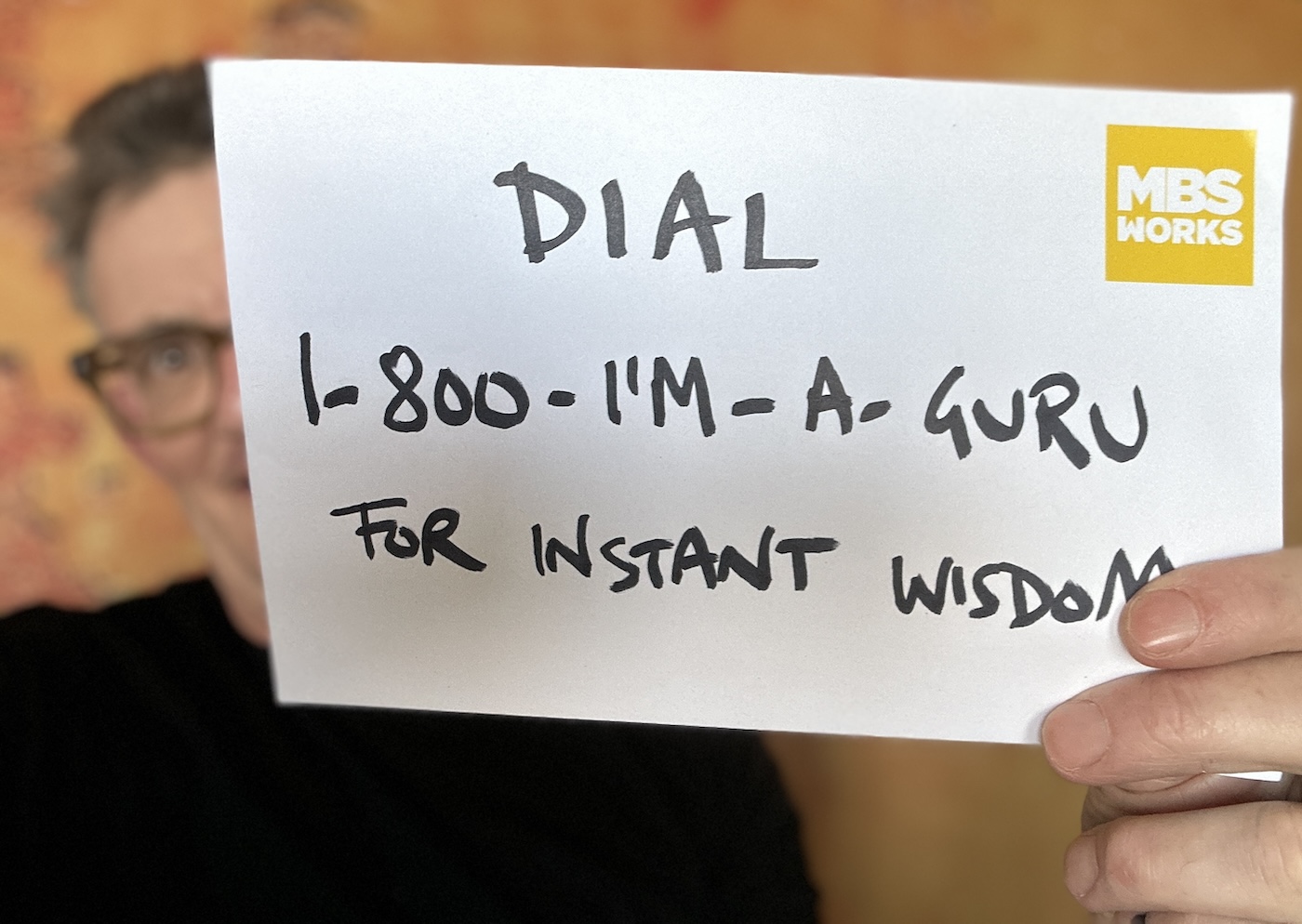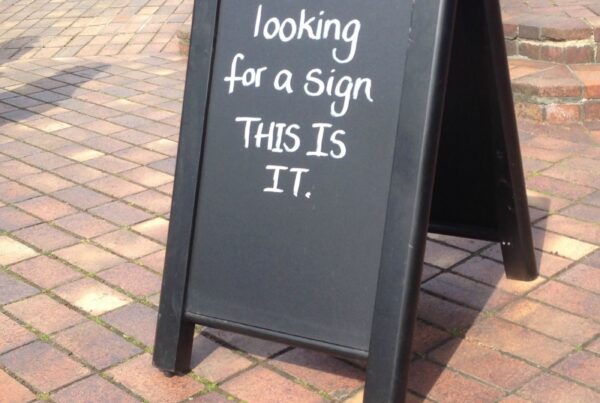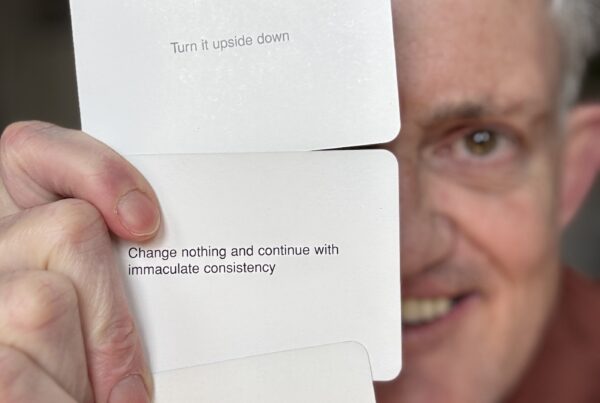
You probably notice the serene wisdom I now emanate. You’re welcome.
Three non-BS ways to embody guru-ness
Global Gurus named me the #4 Coaching Guru this month. Woo hoo!
I’ve been on their list since it started, and I’ve bounced around the rankings, once as high as #3 and other times lower down the list. I think many of you helped vote me up the ladder this time, so thank you very much for your support.
But I have to say, I’ve been pretty allergic to the whole “guru” thing for a while. Certainly, in social media, with the self-appointed, self-promoting, “I’m a [insert topic] guru” … the whole vibe often feels shallow, superior, lacking in grace and humility, and usually a big red flashing light saying: I’M DEFINITELY NOT A GURU.
What helped and grounded me was a combination of two things.
First, a conversation with my friend Eric Klein (you can hear another chat, my pod interview with him on ep.137 of 2 Pages with MBS, here). He’s a (wonderful) teacher in a spiritual tradition (I’m taking a course of his, and you can too … details below); he has a guru, and he has a joy and a stillness that I somewhat envy. Eric told me that in various translations, “guru” means both “a dispeller of darkness” and also “heavy” … meaning gravitas, or embodied wisdom, “heavy” like a cloud is heavy with water. That made me like the term more.
Second, re-reading Herman Hesse’s book Siddhartha, a short and wise book on the path and pitfalls to enlightenment-or-at-least-contentment.
At one stage of his journey, Siddhartha says, “Siddhartha does nothing, he waits, he thinks, he fasts.” I’m going to borrow that together with being buoyed by my chat with Eric and suggest three practices of being a guru that you can use, and I can use as well.
Noticing is at its heart
When you wait, if you’re lucky, you start to notice. I realized on the recent hike I did (see my previous newsletter, the “leech” edition) that I could either walk and be focused on the path in front of me, or stop and start to properly notice the country around me.
What a gift to look down, and up, and out, and notice what’s there.
What a gift to look inward, and notice what you’re feeling and what you’re thinking and what your patterns might be.
Fasting is at its heart
If you can pick up speed in everything you do, then … wait, wrong fasting 😀.
Siddhartha meant going without food, but I’m taking it more metaphorically and less calorie-focused, and offering it up as reducing things down to what’s essential and necessary. Not just stuff of course, but the 3 Ps: projects, people, patterns. Projects: the work you do. People: the relationships you have. Patterns: the way you show up to the world. The goal is finding your nourishment from what’s most important.
What a gift to realize what you don’t need.
What a gift to let go of what you don’t need.
Teaching is at its heart
I love my role as a teacher. I was lucky to have three grandparents and one brother who were teachers before me – I think it’s in my blood – and I know people might see me as a writer or facilitator or speaker or even entrepreneur and founder … but what I am most of all, is a teacher. I think you might be, too.
What a gift to have hard-earned wisdom and to be able to share it.
What a gift to have good questions and to be able to ask them.
What a gift to have stories and to be able to tell them.
Want The Works in your inbox? Sign up (free) here




